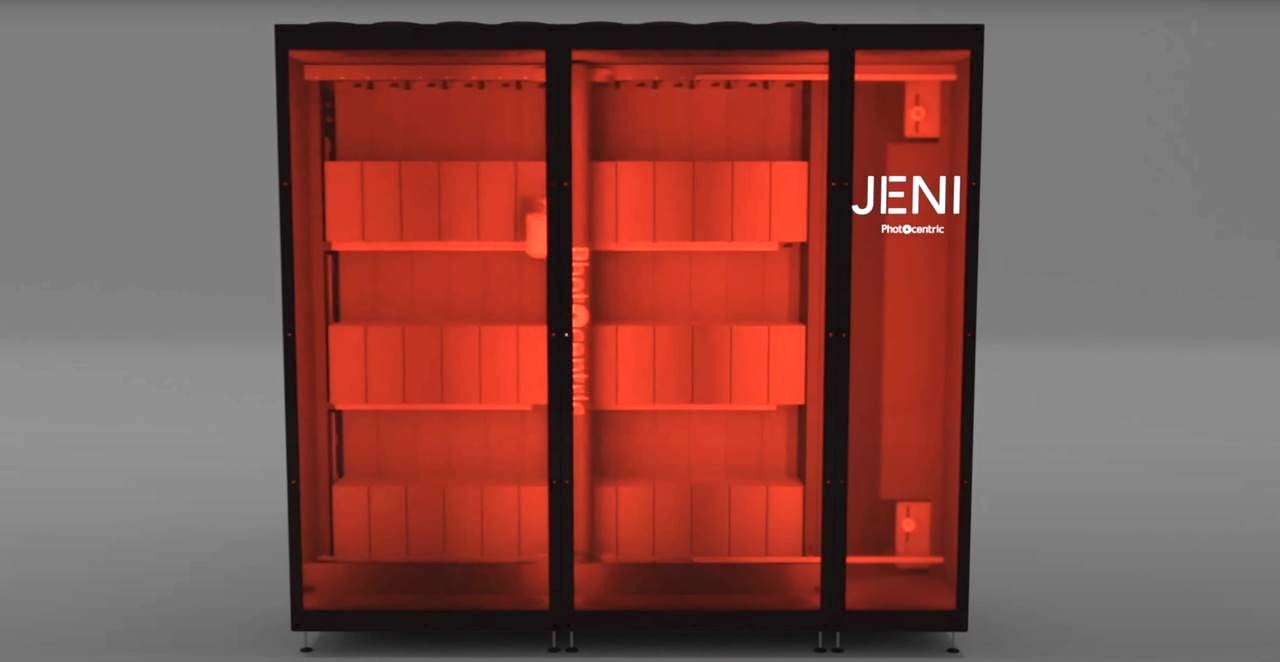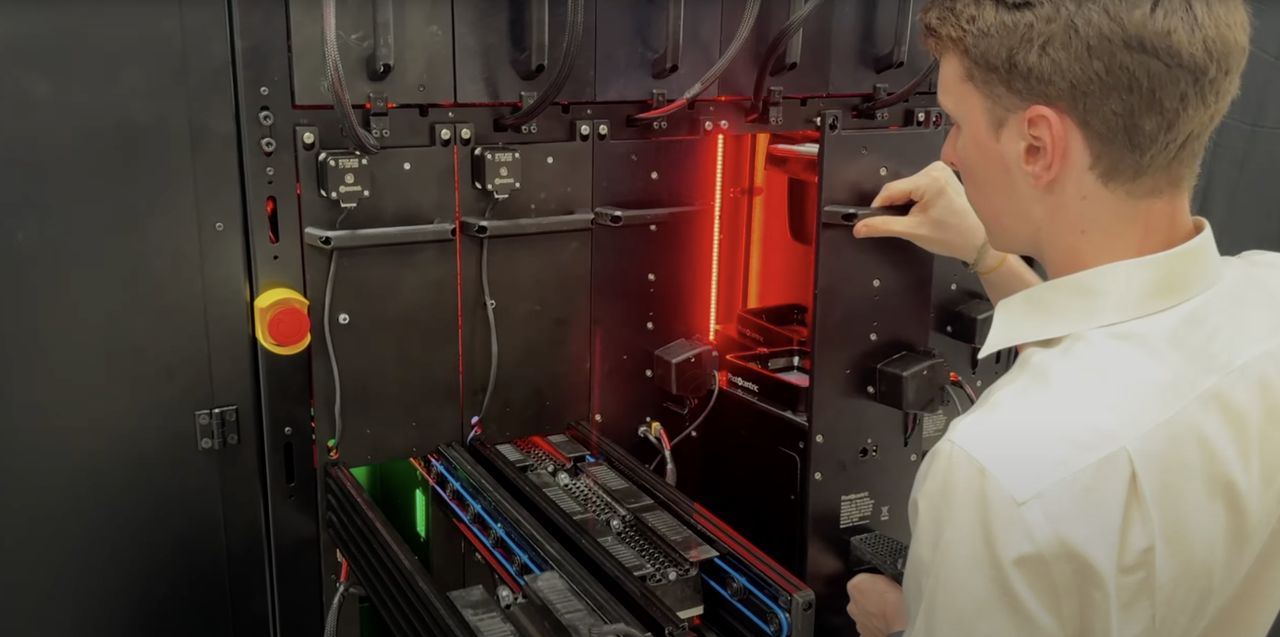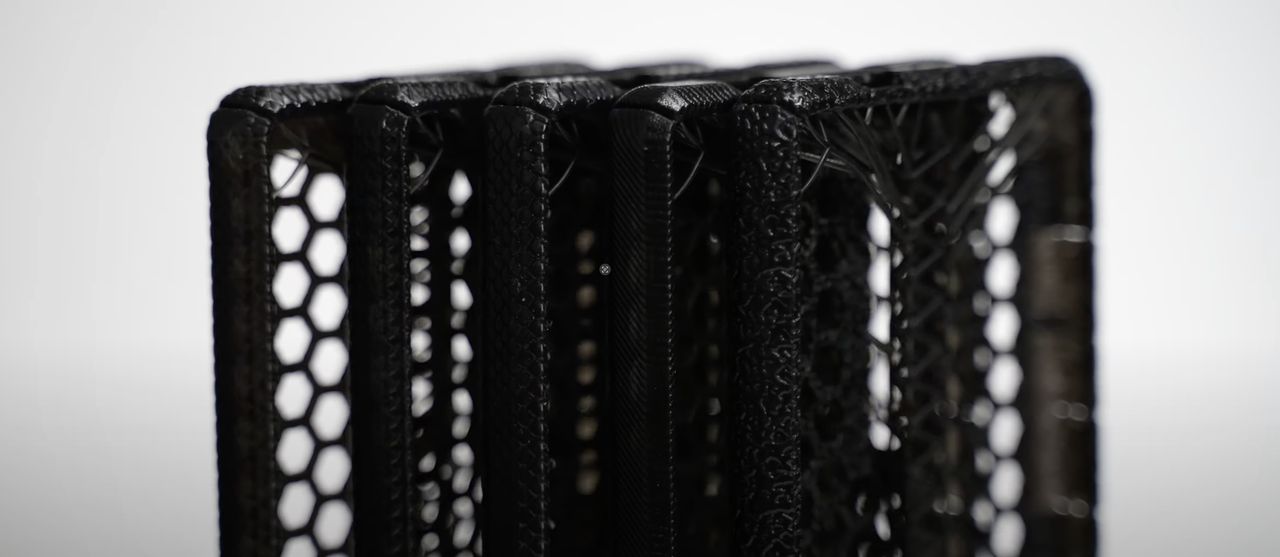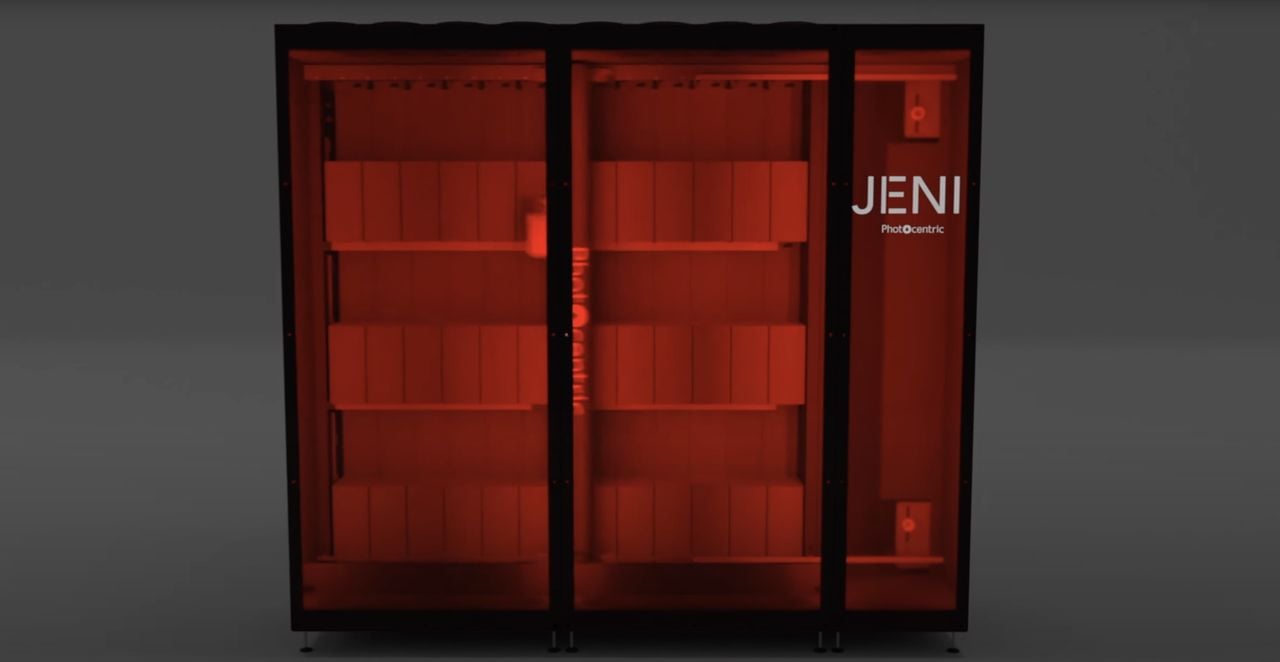
Photocentric announced a new production resin 3D printing system called “JENI”.
The UK company has long been producing photopolymer resin and later 3D printers. A pattern I’ve seen is that their initial machines were relatively small, but over time they’ve released increasingly larger devices.
The JENI system seems to be the culmination of that effort, where they have developed an entire high-speed production platform for 3D printed resin parts.
It seems that the genesis of JENI began during the pandemic, when Photocentric found themselves with an excess inventory of 3D printers. They smartly set up their own manufacturing centre using their own equipment, and were able to print literally millions of parts for customers.
Interestingly, their experience working with their own equipment in real life applications caused them to learn many things they might not otherwise have known. They’ve been incorporating this knowledge into their most recent products.
But it now seems that the experience also has led them to deeply understand the needs of larger-scale manufacturing using 3D printing. They’ve created JENI to address those needs, as they understand them.

JENI is not just a 3D printer; it’s a system for manufacturing. It includes not only the printer, but also washing, rinsing, and curing functions. Even better, these are all provided in a modular form that allows customers to configure their JENI system to match throughput needs.
In this video, Photocentric Managing Director Paul Holt explains how the system works:
Holt said in the video that it can produce one completed print plate every 20 seconds, which is quite impressive. Note this doesn’t mean a single plate can be printed in 20 seconds, but rather through parallel operations that’s the throughput you can expect. Throughput is the factor most important to manufacturers, not single unit speed.
How can this be achieved? It seems that JENI has a robotic system that moves plates around through the various modules of a JENI system. The printer itself is quite speedy, with an ability to print up to 180mm per hour using certain materials.
The JENI printer is also scalable itself. Photocentric can configure the machine to have different build volumes, again matching the needs of the manufacturer.

Prints I’ve inspected from Photocentric’s previous models are almost always near-perfect, and I expect the same will come from JENI systems.
That is quite important, as Photocentric is positioning JENI not as another 3D printer, but rather as a direct competitor to injection molding systems. It seems they believe the costs of using JENI could be comparable, at least for certain part volumes, because there is no need for tooling: just print what you need immediately. That could provide quite an advantage for some manufacturers.
The JENI system is quite impressive and I am interested in learning more about it and how the robotic components work.
Via Photocentric

